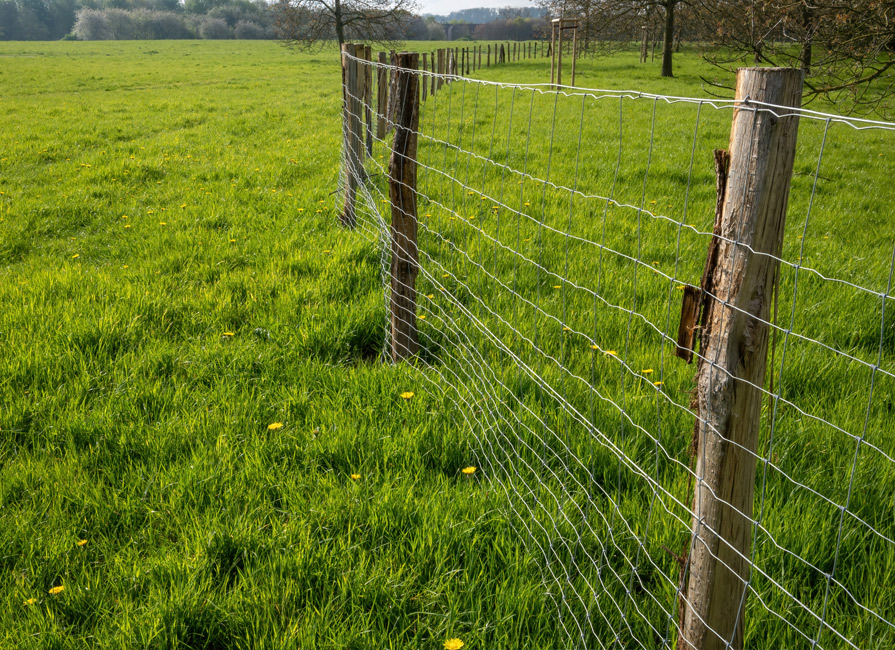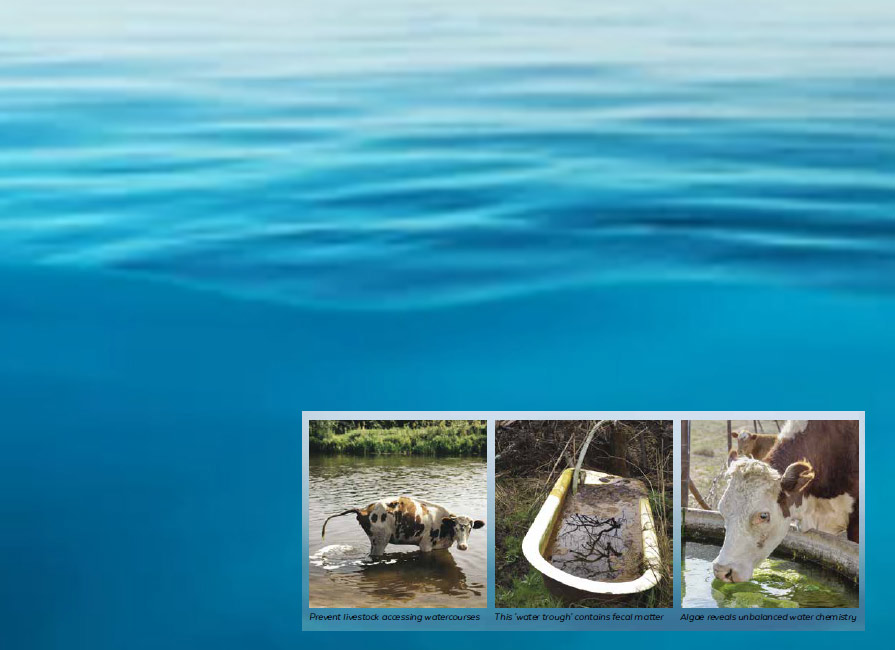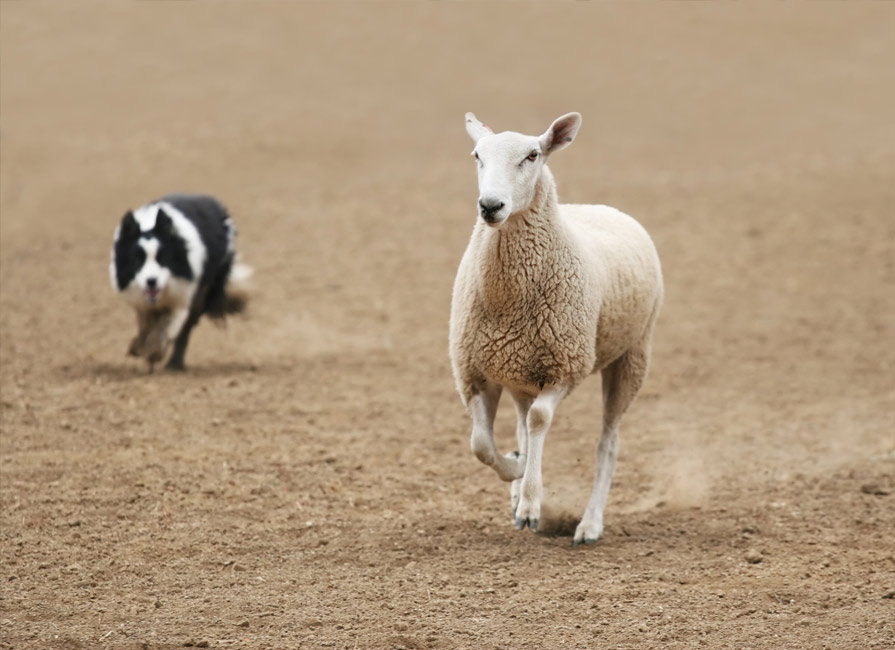Water is arguably the most important nutrient on earth. It is “the universal solvent,” providing…

Health And Safety
You are hiking in the woods with a friend when a bear attacks. How fast must you run to escape?
- 28 mph/44 kmh
- Drop everything, climb a tree and wait it out
- 36 mph/58 kmh
- Faster than your friend
If you answered D, then you have the right mindset for biosecurity! Biosecurity is not about building an impenetrable fortress, irrelevant costly actions, or impossible goals. Rather, good biosecurity is about practical measures that keep you ahead of whatever pathogens may come calling.
Understand the foe
Which diseases are endemic in your area? Are there new arrivals? Do some pathogens pass through seasonally as wildlife migrate? If you are not sure, your local farm vet probably has some insight. Knowing which pathogens are present in your region—and which ones can affect your livestock—can help you make efficient use of limited time and resources.
When considering risks, ask two questions: how likely is it that this disease will reach my farm? If it does, how bad would that be? It is easy to address scenarios that are likely, or catastrophic. But the preventable diseases that are only somewhat likely —with moderate impacts—tend to sneak past us, eroding animal wellbeing and productivity.
To cause an outbreak on your farm, a disease agent must:
- Enter your operation
- Hide long enough to multiply
- Spread into new animals, groups, or areas of the farm
- Survive by settling someplace safe from your prevention/remediation efforts
So how can you counter these steps?
Exclude
In recent articles, we have highlighted the roles and actions of an animal’s immune system. Biosecurity can be considered an immune system for your farm. You may not be able to eradicate a disease agent in your region, but you can take steps to keep it outside your perimeter fence.
In fact, a perimeter fence is a very good first step in excluding pathogens harbored by wildlife or neighboring livestock. But a few other common-sense actions at the farm gate and barn door can also help keep pathogens out.
When possible, keep delivery or rendering vehicles away from animal areas (ideally, remove organic debris and disinfect vehicles before they enter the farm). Wear clean boots. Work with clean/vulnerable animal groups such as newborns first and sick pens last. Use washable outerwear; if you may have been in contact with infected animals, change clothes before other chores. Provide separate cleaning and disinfection baths for all boots at key entry points. Minimize entry into animal areas and ensure everyone who enters follows the same guidelines.
Detect
Most pathogens need some time to incubate before they cause serious disease. If you isolate new arrivals from the rest of your animals for that incubation period (up to 4 weeks), you will likely discover any disease (and pests) they brought with them before infecting the rest of your herd or flock.
Quarantine is an excellent yet simple tool for detection in new arrivals, but what about disease in your existing herd? Diligent monitoring leads to early detection. Indeed, monitoring is a key component of biosecurity because it gives you an opportunity to intervene before infected animals incubate enough to affect the entire herd or flock.
Contain
Even before an animal’s immune system positively identifies an invading pathogen, the body takes steps to contain it. Some immune cells engulf the unknown material, while others work to disinfect the region. At the same time, the body responds to tissue distress signals by sending materials needed for repair—and plenty of fluids.
This is an excellent model for a farm-level response. As soon as a potential disease is detected, containment should be a top priority. Avoid moving sick animals around the farm and prevent direct (nose-to-nose) contact with healthy animals. Increase cleaning frequency and disinfect all equipment and boots before use with healthy groups. Ensure excellent nutrition, including trace minerals and a constant supply of clean, fresh water.
Treat
An animal’s immune system takes about three weeks to identify a new pathogen, fashion and execute a proper response. Thanks to veterinary science and technology, we can often obtain a positive diagnosis and begin targeted treatment the same day a disease is detected. As well as protecting animal welfare and productivity, prompt treatment can eliminate a disease agent before it finds a permanent hiding place on your farm. This is especially important if gaps in your genetics, nutrition, or handling occasionally cause some animals’ immune systems to underperform.
Immune memory: Plan!
Vaccination allows a body to plan its response for a pathogen it has never experienced, and immune memory cells store that blueprint. If biosecurity is your farm’s immune system, then your plans and records embody immune memory. Past experience is not required to handle a biosecurity incident well. But you are far more likely to succeed Perimeter fencing will help exclude pathogens harbored by wildlife and neighboring livestock with minimal losses if your team has worked through a “What if?” scenario.
Instead of listing all possible incidents or responses, a great biosecurity plan may simply outline how the farm will exclude, detect, contain and resolve disease.
A biosecurity plan kept in a drawer will not protect your animals any more than vaccines left in the fridge. Provide your employees with training and involve staff in periodic refreshers. Whenever a new infection is noted on the farm, consult your biosecurity plan. Where did a breach occur? Could better monitoring or management have reduced disease impacts? Update the plan accordingly.
Staying ahead
Like other management decisions, you should approach biosecurity by understanding risks and determining which actions are worth their costs. Ask your vet which diseases may be present in your region, how likely is each to affect you, and how bad would it be if it did? Establish habits and behaviors that minimize everyday risks. When risks are higher, take a look at your biosecurity plan. Do you need to refresh your habits or adapt the plan to new circumstances?
It may be impossible to outrun the bear but that’s ok. With sound biosecurity, you are well equipped to stay ahead of it.
DISINFECTANT
It is vital to choose the right disinfectant according to the microorganism(s) being targeted, product character-istics, and where it will be used. Follow all instructions to the letter and seek professional advice if in any doubt.
The Center for Food Security and Public Health has produced an excellent factsheet with practical advice on disinfectants, boot and vehicle cleaning. Download Disinfection 101 at cfsph.iastate.edu.
Author: Jennifer Gravley Burton DVM is a veterinarian and educator with a special interest in the intersection of food animal medicine and public health
Originally published in the Summer 2022 issue of AGW’s Sustainable Farming magazine.



